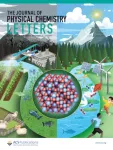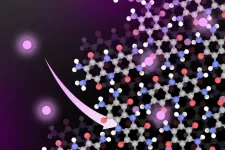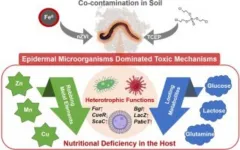(Press-News.org) Structural insights into a potent antimalarial drug candidate’s interaction with the malaria parasite Plasmodium falciparum have paved the way for drug-resistant malaria therapies, according to a new study by researchers at Weill Cornell Medicine and Van Andel Institute.
The antimalarial molecule, TDI-8304, is one of a new class of experimental therapeutics that targets the proteasome, an essential, multiprotein complex in P. falciparum cells. Two years ago, the researchers showed in a preclinical study that TDI-8304 potently kills malaria parasites at multiple stages of their life cycle and clears parasites in animal model of malarial infection.
In the new study, published Dec. 14 in Nature Communications, the researchers used cryo-electron microscopy (cryo-EM) to show how TDI-8304 fastens to its proteasome target. The high-resolution imaging also revealed what happens to P. falciparum, the major cause of malaria deaths, when it mutates to become less sensitive to TDI-8304.
“This study gives us insights that should help in the development of new proteasome-inhibitor antimalarials that are not very susceptible to resistance,” said study co-senior author Dr. Gang Lin, an associate professor of research in microbiology and immunology at Weill Cornell Medicine.
“Remarkably, the mutation that makes P. falciparum less sensitive to TDI-8304 makes it more sensitive to compounds that target a different part of the parasite proteasome,” said co-senior author Dr. Huilin Li, professor and chair of the Department of Structural Biology at Van Andel Institute. “Our cryo-EM analysis illuminated how that ‘collateral sensitivity’ occurs.”
The study’s first author was Dr. Hao-Chi Hsu, a research scientist in Dr. Li’s lab at Van Andel Institute. Dr. Laura Kirkman, an associate professor of medicine and microbiology and immunology at Weill Cornell Medicine, also collaborated on the study.
A Need for New Anti-Malaria Strategies
Malaria continues to be a major public health threat, with roughly 250 million cases per year, and more than 600,000 deaths, principally in young children. Although malaria vaccines have been developed—the World Health Organization currently recommends two of them—their effectiveness and uptake in malaria-endemic regions are far from ideal. The widespread use of antimalarial drugs also has led to the emergence of drug resistance in malaria parasites. Thus, new antimalarial drugs that are durably effective and available in pill form would be particularly useful.
In 2014, Dr. Lin and Dr. Kirkman began collaborating to develop molecules that inhibit the activity of the P. falciparum proteasome without affecting the human counterpart. They began working with Weill Cornell Medicine’s Enterprise Innovation team, and ultimately began a collaboration with the Sanders Tri-Institutional Therapeutics Discovery Institute (Tri-I TDI), which partners with faculty at Weill Cornell Medicine, Memorial Sloan Kettering Cancer Center, and The Rockefeller University to translate groundbreaking biological discoveries into small molecule or biologic therapeutics.
TDI-8304 emerged from that effort. In a 2021 study, Dr. Lin and colleagues showed in lab-dish and preclinical model tests that TDI-8304 is highly effective, even against P. falciparum strains that are resistant to first-line antimalarials called artemisinins. However, their early work showed that P. falciparum can acquire mutations that reduces the parasite’s susceptibility to molecules like TDI-8304, which primarily targets one subunit of the parasite proteasome.
Structural Insights Reveal Strengths and Weaknesses of Drug Candidate
The main aim of the new study was to determine how TDI-8304 binds to the subunit, how that target differs on the human proteasome, and how the parasite’s new mutation enables resistance. For this, Dr. Lin turned to his long-time collaborator Dr. Li, a structural biology expert.
Cryo-EM studies of malaria parasite structures tend to be challenging, due to the difficulty of growing the parasites in blood cells and enriching sufficient material. But Dr. Li and his team succeeded in solving the TDI-8304/proteasome interactions at very high resolution.
These models showed that TDI-8304 makes extensive connections to its target, whereas the new mutation, which “flips” a portion of the adjacent subunit, greatly weakens those connections.
Dr. Kirkman’s prior work had shown that this mutation also somehow enhances the potency of a compound targeting a different part of the proteasome. In the new study, the resolution of the structure of this compound bound to the mutant proteasome clarified how this happens.
The researchers hope to use these findings to develop therapeutics that selectively and potently hit both these proteasome targets—a strategy that should delay the emergence of resistance. Drs. Lin and Li envision that such an approach could be combined with existing drugs to further minimize the risk of resistance.
END
Structural study points the way to better malaria drugs
2024-01-18
ELSE PRESS RELEASES FROM THIS DATE:
VCU research promotes a business paradigm shift that emphasizes people, not just profit
2024-01-18
RICHMOND, Va. (Jan. 18, 2024) – New research from Virginia Commonwealth University fundamentally challenges the paradigm that business organizations should promote profit above all else.
Christopher S. Reina, Ph.D., executive director of the VCU Institute for Transformative Leadership, lays out the foundation for transforming business to be much more people-centered and humanistic in “Humanistic Organizing: The Transformative Force of Mindful Organizational Communication.” ...
Towards the quantum of sound
2024-01-18
The quantum ground state of an acoustic wave of a certain frequency can be reached by completely cooling the system. In this way, the number of quantum particles, the so-called acoustic phonons, which cause disturbance to quantum measurements, can be reduced to almost zero and the gap between classical and quantum mechanics bridged.
Over the past decade, major technological advances have been made, making it possible to put a wide variety of systems into this state. Mechanical vibrations oscillating between ...
NFL PLAY 60 launches Fitness Tracking Competition to help students get daily minutes of movement
2024-01-18
DALLAS, January 17, 2024 — The American Heart Association and National Football League are asking classrooms, afterschool programs and other student groups to join the NFL PLAY 60 Fitness Tracking Competition from Jan. 22 to Feb. 9. The classroom with the most activity minutes in each of the 32 NFL club markets will receive a $1,000 grant with an additional $1,000 PLAY 60 grant awarded to the top classroom overall. The competition and the goal of NFL PLAY 60 is to increase physical activity in kids which impacts overall mental and physical wellness which is essential to help children reach their full potential.
The NFL PLAY 60 Fitness Tracking Competition takes place ...
Using magnetized neurons to treat Parkinson’s disease symptoms
2024-01-18
Electrical deep brain stimulation (DBS) is a well-established method for treating disordered movement in Parkinson’s disease. However, implanting electrodes in a person’s brain is an invasive and imprecise way to stimulate nerve cells. Researchers report in ACS’ Nano Letters a new application for the technique, called magnetogenetics, that uses very small magnets to wirelessly trigger specific, gene-edited nerve cells in the brain. The treatment effectively relieved motor symptoms in mice without damaging surrounding ...
How does one species become many?
2024-01-18
Evolutionary biologists have long suspected that the diversification of a single species into multiple descendent species – that is, an “adaptive radiation” – is the result of each species adapting to a different environment. Yet formal tests of this hypothesis have been elusive owing to the difficulty of firmly establishing the relationship between species traits and evolutionary “fitness” for a group of related species that recently diverged from a common ancestral species.
A global team of biologists led by McGill University have compiled nearly two decades of field data – representing the study ...
St. Jude Children’s Research Hospital adds $13 million project to Research Collaboratives Program
2024-01-18
(MEMPHIS, Tenn., January 18, 2024) St. Jude Children’s Research Hospital today announced a nearly $13 million investment toward a new research collaboration with scientists at Columbia University, Duke University and Stanford University to expand the understanding of G-protein coupled receptors (GPCR), which are vital proteins that impact human health and disease.
The collaborative research project is led by two St. Jude researchers, Scott Blanchard, Ph.D., and M. Madan Babu, Ph.D., who are working with Nobel laureate and Howard Hughes Medical Institute investigator Robert Lefkowitz, M.D., of Duke University; Jonathan Javitch, M.D., Ph.D., of ...
Efficiently moving urea out of polluted water is coming to reality
2024-01-18
WPI Researchers have developed a material to remove urea from water and potentially convert it into hydrogen gas. By building these materials of nickel and cobalt atoms with carefully tailored electronic structures, the group has unlocked the potential to enable these transition metal oxides and hydroxides to selectively oxidize urea in an electrochemical reaction.
The study, led by Xiaowei Teng, the James H. Manning professor of Chemical Engineering at WPI, was recently published in the Journal of Physical Chemistry Letters and highlighted in the publication’s supplementary front cover.
The ...
Researchers awarded $2.7 million grant to develop the faba bean as a sustainable mid-Atlantic crop
2024-01-18
Consider the faba bean, also known as the fava bean or broad bean.
The bright-green legume has been enjoyed as a diet staple for thousands of years in Africa, Asia, and the Mediterranean. Just one cup of faba beans has 13 grams of protein — making it a better protein source than most other legumes — along with plenty of fiber, potassium, and iron. Plus, it’s a good cover crop that helps improve soil health, slow erosion, and control pests, disease, and weeds.
But you don’t often see it in the fields or on the menus in Virginia.
That’s why College of Agriculture and Life ...
Cobalt-free batteries could power cars of the future
2024-01-18
CAMBRIDGE, MA – Many electric vehicles are powered by batteries that contain cobalt — a metal that carries high financial, environmental, and social costs.
MIT researchers have now designed a battery material that could offer a more sustainable way to power electric cars. The new lithium-ion battery includes a cathode based on organic materials, instead of cobalt or nickel (another metal often used in lithium-ion batteries).
In a new study, the researchers showed that this material, which could be produced at much lower cost than cobalt-containing batteries, can conduct electricity at similar rates as cobalt batteries. The new battery also has comparable storage ...
New study reveals the impact of skin microorganisms on earthworm toxicity in polluted environments
2024-01-18
Epidermal microorganisms, vital in nutrient exchange between hosts and environments, have now been shown to play a key role in host toxicity through community changes. This research highlights how changes in the community of skin-based microbes correlate more significantly with earthworm toxicity than those in intestinal microorganisms, especially under combined soil contaminations.
A new study (https://doi.org/10.1016/j.eehl.2023.11.001) published in the journal Eco-Environment & Health, researchers from Zhejiang University revealed the crucial role of epidermal microorganisms in influencing earthworm toxicity under environmental stress, notably in conditions ...





